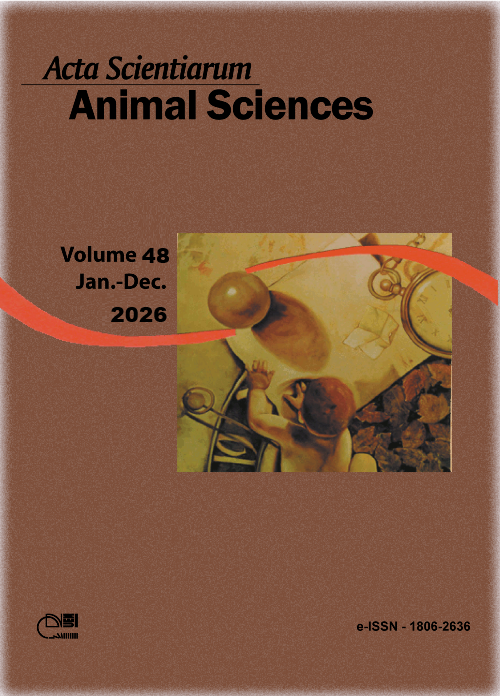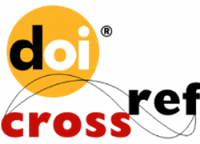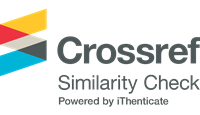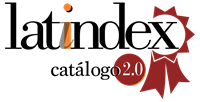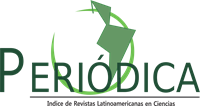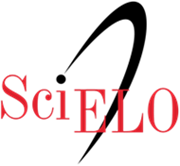Baru meal on the performance of dairy calves: an alternative to reduce costs in the breeding phase
Abstract
The objective of this study was to evaluate the intake, performance, and economic viability of crossbred Holstein calves (n = 16) fed diets containg different levels of baru meal (Dipteryx alata . Vog) as a replacement for corn (0, 25, 50, and 72%). Total solid feed, concentrate, and forage intake, nutrient intake, weight gain, ingestive behavior, and economic viability were evaluated. Total solid feed and concentrate intake linearly increased (p<0.05) with the replacement of corn by baru meal, however, weight gain (13.7 Kg) was not affected (p>0.05). Baru meal inclusion linearly increased the intake of crude protein, minerals, ether extract, and non-fibrous carbohydrates. Concentrate feeding time exhibited a quadratic effect, with a maximum of 75.92 min. day-1 at 67% replacement. Economic analysis showed that the 50% replacement diet result in higher feed costs but lower cost per kilogram of gain. The inclusion of baru meal up to 72% of corn replacement increased intake without compromising the performance during preweaning phase. A 50% replacement provided the best economic return.
Downloads
References
Alves-Santos, A. M., Fernandes, D. C., & Naves, M. M. V. (2021). Baru (Dipteryx alata Vog.) fruit as an option of nut and pulp with advantageous nutritional and functional properties: a comprehensive review. NFS Journal, 24(1), 26-36. https://doi.org/10.1016/j.nfs.2021.07.001
Araújo, F. L., Souza, K. A., Moura Santana, N., Carvalho Santana, L. R., Silva, C. S., Oliveira, K. N., & Bagaldo, A. R. (2021). Animal performance, ingestive behavior, and carcass characteristics of grazing-finished steers supplemented with castor bean (Ricinus communis L.) meal protein. Tropical Animal Health and Production, 53(2), 240. https://doi.org/10.1007/s11250-021-02673-8
Coimbra, E., Azevedo, R., Reis, R., Saturnino, H., & Coelho, S. (2017). Substituição total do milho pela polpa cítrica no concentrado de bezerros leiteiros. Archivos de Zootecnia, 66(255), 353-358. https://doi.org/10.21071/az.v66i255.2510
Detmann, E., Souza, M., Valadares Filho, S., Queiroz, A., Berchielli, T., Saliba, E., & Azevedo, J. (2012). Métodos para análise de alimentos. Suprema.
Dondé, S., Cezar, A. M., Toledo, A. F., Coelho, M., Tomaluski, C., Reis, M., & Bittar, C. M. (2022). Replacement of dry ground corn with reconstituted corn grain silage in the starter concentrate of dairy calves. Journal of Animal and Feed Sciences, 31(2), 182-190. https://doi.org/10.22358/jafs/147655/2022
Ezequiel, J. M. B., Galati, R. L., Mendes, A. R., & Faturi, C. (2006). Desempenho e características de carcaça de bovinos Nelore em confinamento alimentados com bagaço de cana-de-açúcar e diferentes fontes energéticas. Revista Brasileira de Zootecnia, 35(5), 2050-2057. https://doi.org/10.1590/S1516-35982006000700024
Hawkins, A., Burdine, K., Amaral-Phillips, D., & Costa, J. H. C. (2019). An economic analysis of the costs associated with pre-weaning management strategies for dairy heifers. Animals, 9(7), 471. https://doi.org/10.3390/ani9070471
Horvath, K. C., & Miller-Cushon, E. K. (2017). The effect of milk-feeding method and hay provision on the development of feeding behavior and non-nutritive oral behavior of dairy calves. Journal of Dairy Science, 100(5), 3949-3957. https://doi.org/10.3168/jds.2016-12223
Khan, M. A., Bach, A., Weary, D. M., & Von Keyserlingk, M. A. G. (2016). Invited review: transitioning from milk to solid fed in dairy heifers. Journal of Dairy Science, 99(2), 885-902. https://doi.org/10.3168/jds.2015-9975
Lima, D. C., Alves, M. R., Noguera, N. H., & Nascimento, R. P. (2022). A review on Brazilian baru plant (Dipteryx alata Vogel): morphology, chemical composition, health effects, and technological potential. Future Foods, 5(1), 100146. https://doi.org/10.1016/j.fufo.2022.100146
Oliveira, M. V. M., Abreu, C., Júnior, F. M. V., Ferandes, H. J., & Salla, L. E. (2015). Efeito do feno de leguminosas no desempenho de bezerros lactentes. Revista Ciência Agronômica, 46(3), 654-660. https://doi.org/10.5935/1806-6690.20150050
Oliveira, K. M., Castro, G. H. F., Herculano, B. N., Mourthé, M. H. F., Santos, R. A., & Pires, A. V. (2016). Comportamento ingestivo de bovinos leiteiros alimentados com farelo de crambe. Arquivo Brasileiro de Medicina Veterinária e Zootecnia, 68(2), 439-447. https://doi.org/10.1590/1678-4162-7995
Pezhveh, N., Ghorbani, G. R., Rezamand, P., & Khorvash, M. (2014). Effects of different physical forms of wheat grain in corn-based starter on performance of young Holstein dairy calves. Journal of Dairy Science, 97(10), 6382-6390. https://doi.org/10.3168/jds.2013-7718
Poczynek, M., Toledo, A. F., Silva, A. P., Silva, M. D., Oliveira, G. B., Coelho, M. G., & Bittar, C. M. M. (2020). Partial corn replacement by soybean hull, or hay supplementation: effects of increased NDF in diet on performance, metabolism and behavior of pre-weaned calves. Livestock Science, 231, 103858. https://doi.org/10.1016/j.livsci.2019.103858
Quigley, J. D., Lago, A., Chapman, C., Erickson, P., & Polo, J. (2013). Evaluation of the Brix refractometer to estimate immunoglobulin G concentration in bovine colostrum. Journal of Dairy Science, 96(2), 1148-1155. https://doi.org/10.3168/jds.2012-5823
Santana, A. E. M., Bozorg, V. L. A., Restle, J., Bilego, U. O., Augusto, Wescley, F. A., & Neiva, J. N. M. (2023). Does the use of corn and soybean hulls affect calf performance in the preweaning period? Revista Brasileira de Zootecnia, 52, e20200241. https://doi.org/10.37496/rbz5220200241
SAS Institute Inc. (2014). SAS® OnDemand for academics: user's guide. SAS Institute Inc.
Vastolo, A., Calabrò, S., & Cutrignelli, M. I. (2022). A review on the use of agro-industrial by-products in animals’ diets. Italian Journal of Animal Science, 21(1), 577-594. https://doi.org/10.1080/1828051X.2022.2039562
Copyright (c) 2026 Lucas Gomes Vieira, Luciana Castro Geraseev, Mário Henrique França Mourthé, Felipe Gomes da Silva, Rodrigo Augusto Cortez Passetti, Kellen Amanda Silva Borges, Maria Laura Azevedo Correia

This work is licensed under a Creative Commons Attribution 4.0 International License.
DECLARATION OF ORIGINALITY AND COPYRIGHTS
- I Declare that current article is original and has not been submitted for publication, in part or in whole, to any other national or international journal.
The copyrights belong exclusively to the authors. Published content is licensed under Creative Commons Attribution 4.0 (CC BY 4.0) guidelines, which allows sharing (copy and distribution of the material in any medium or format) and adaptation (remix, transform, and build upon the material) for any purpose, even commercially, under the terms of attribution.
Read this link for further information on how to use CC BY 4.0 properly.




